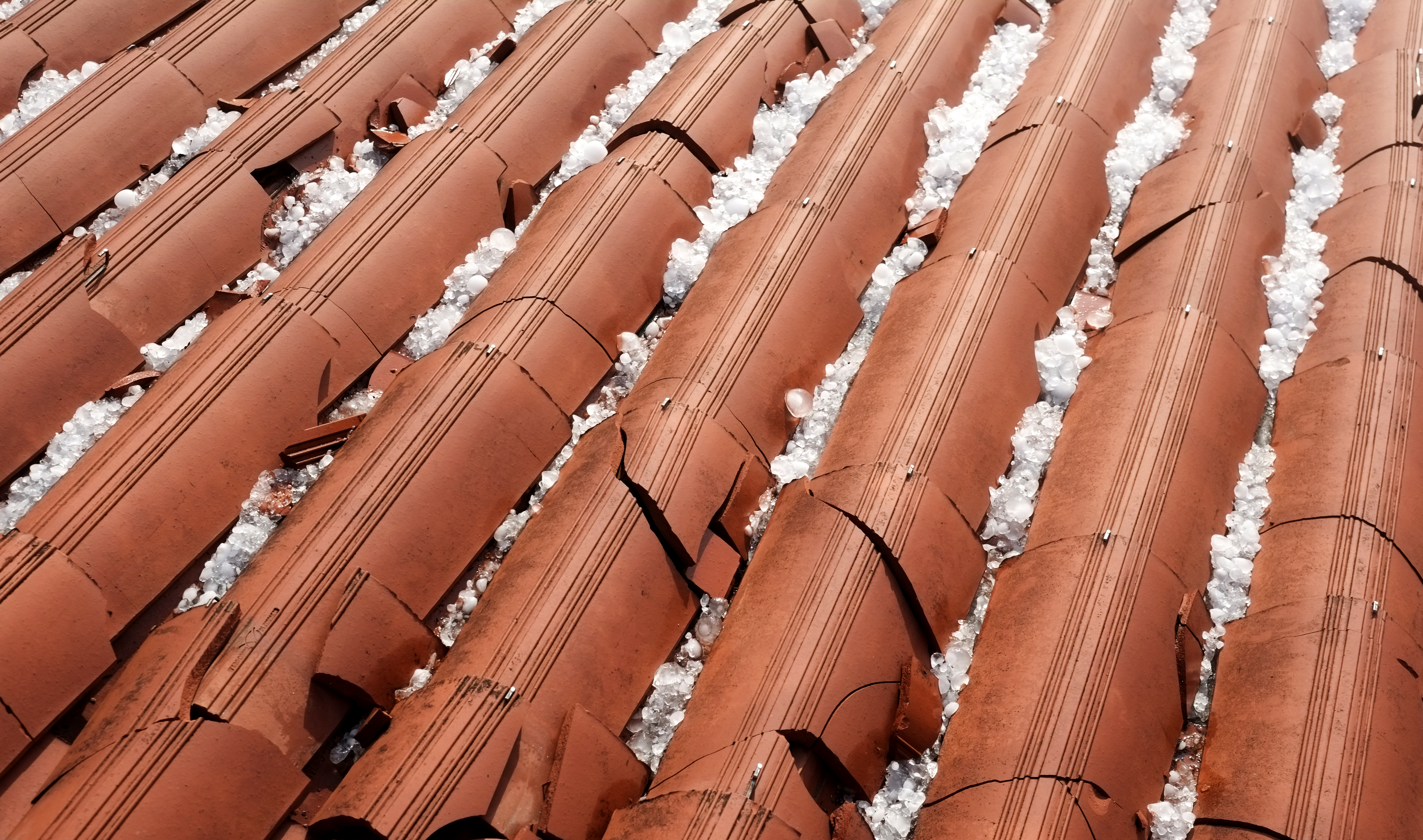April showers bring May flowers… and hail, a lot of it. At this time of year, Midwest homeowners like you need to know the facts about hail damage: the effects of it, what it looks like, and how to deal with it.
What are the effects of hail damage?
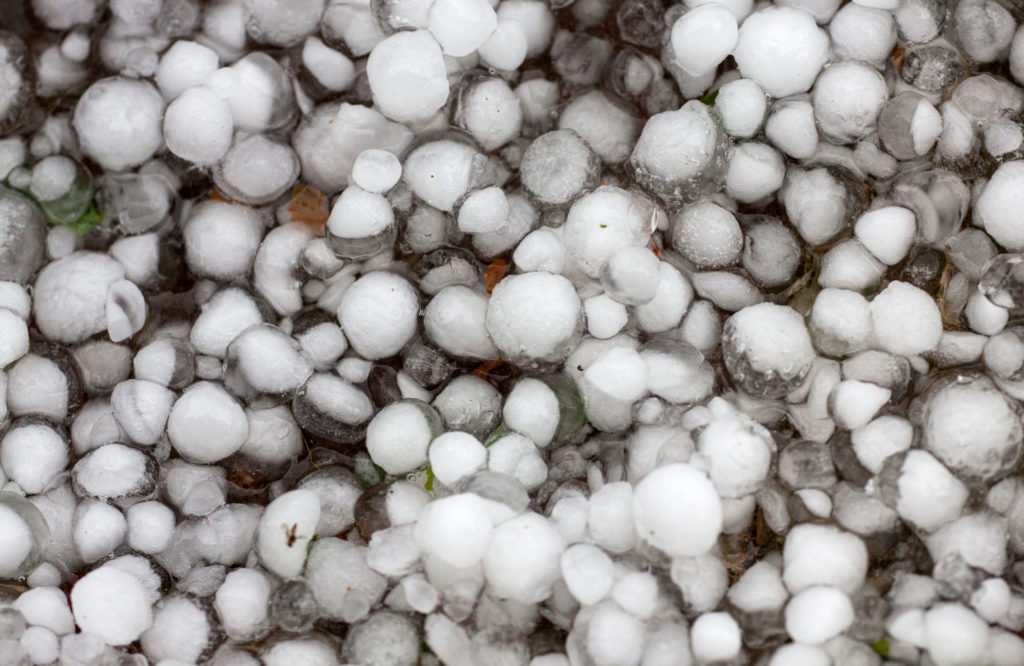 Many homeowners are unaware they may have hail damage or try to put off fixing their hail damage as long as possible, but the effects of hail damage shouldn’t be ignored. Rather, the damage should be repaired quickly and skillfully to reduce its impact as much as possible.
Many homeowners are unaware they may have hail damage or try to put off fixing their hail damage as long as possible, but the effects of hail damage shouldn’t be ignored. Rather, the damage should be repaired quickly and skillfully to reduce its impact as much as possible.
Hail damage can have many different negative effects on your home, including:
Visibly damaged appearance
Hail can leave many notable marks on your roof, such as curling, cracking, dents, bruising, and discoloration.
Reduced shingle life
Severe loss of protective granules, wood splitting, exposed asphalt, and other forms of damage cause shingles to be less durable against the sun, weathering, and wind and more prone to leaks and normal wear and tear. As a result, damaged shingles will require replacement sooner.
Impaired performance
Certain utilities such as air conditioning units, exhaust caps, and roof vents can have their performance impaired by hail damage.
Again, the performance of shingles is impaired because of their susceptibility to leakage, wind damage, and curling.
How does hail damage vary?
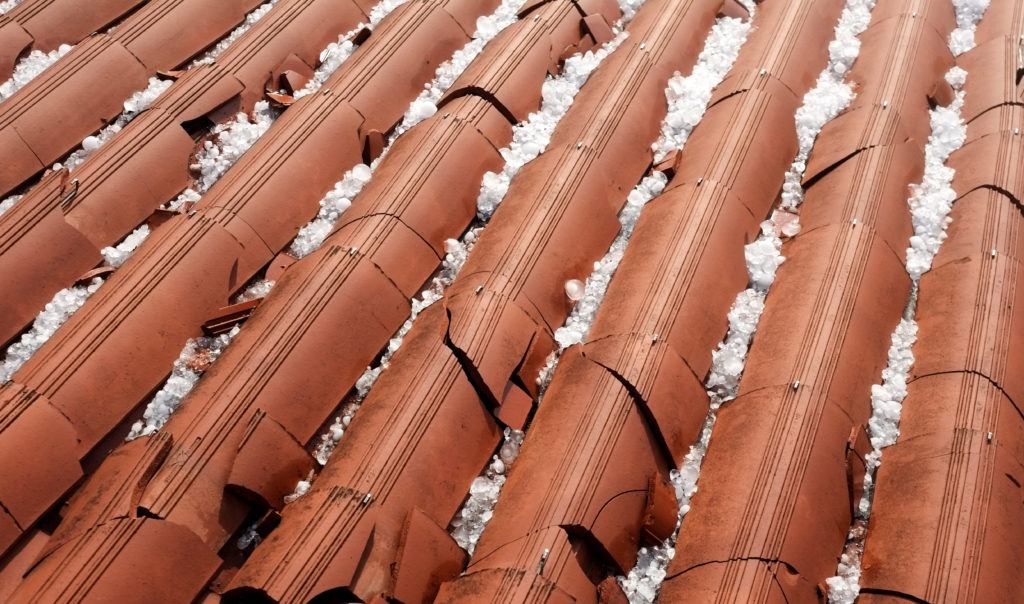
Hail damage can vary from latent (when granules are removed from your shingles, exposing them to the sun and weathering and speeding up their deterioration, or when there is structural weakening) to severe (when the shingles are visibly punctured or torn by hail). Severe damage should be repaired as quickly as possible. Latent damage allows more time for scheduling and planning repairs for a convenient time but should still be fixed relatively quickly.
Many factors cause variance in hail damage:
 Wind
Wind
Wind can alter both the directionality and the speed of falling hail, which affect the location and severity of impact.
 Hail Composition
Hail Composition
Hail ranges from pea-sized to softball-sized. The roughness or smoothness of hail’s edges also varies, though hail is almost never completely smooth. The density of the hail determines how solid it is and thus the severity of its impact.
Age and Condition of Roof
A roof that is old or in poor condition is likely to be more notably damaged by hail.
 Natural Barriers
Natural Barriers
Homes that have less protection from natural blockades such as trees or nearby buildings and structures are more likely to be hit harder by hail.
 Building Materials
Building Materials
Different materials such as wood, asphalt, composition, and aluminum have different reactions to being struck by hail.
What does hail damage look like?
Other kinds of roof/exterior damage can often be confused for hail damage, such as weathering (rain, wind), sunlight (due to its damaging ultraviolet rays), normal wear and tear, and manufacturing or other mechanical defects. It is important to know the characteristics of hail damage to differentiate between damage from hail and that from other causes.
Particular materials have varying reactions to hail and can look very different, as shown below:
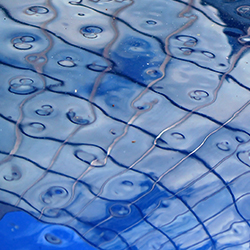
Metals
Aluminum, which is seen in siding, gutters, window trim, roof vents, exhaust caps, wind turbines, and exterior air conditioning units, often has dents and dings from hail.
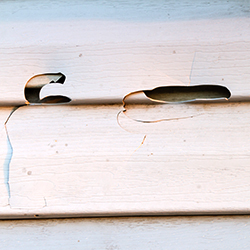
Vinyl
When hail damages vinyl siding, it appears either as cracking, often in arched patterns in unsupported sections of the paneling, or chipping, usually on the bottom of the paneling.
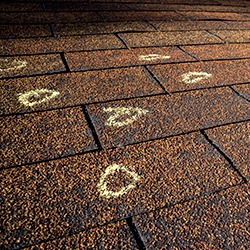
Asphalt/Composition
The damage appears random. The shingles have lost a significant amount of their protective granules, which can sometimes be found in the gutters, and this means they occasionally appear shiny because of exposed asphalt. There are visible black marks, dents, and bruises on the shingle. If the hail is big enough or hits the roof hard enough, the shingle is occasionally punctured or torn. After being weakened by hail, the shingles may eventually crack and curl.
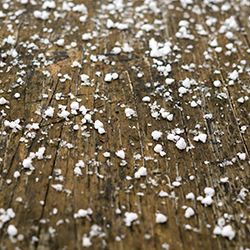
Wood
The damage appears random and without a traceable pattern, similar to asphalt/composition shingles. The wood has splits running through it. The splitting has little to no surrounding deterioration. The splitting appears brownish or sepia toned in color. Impact marks or dents lie along the splits.

